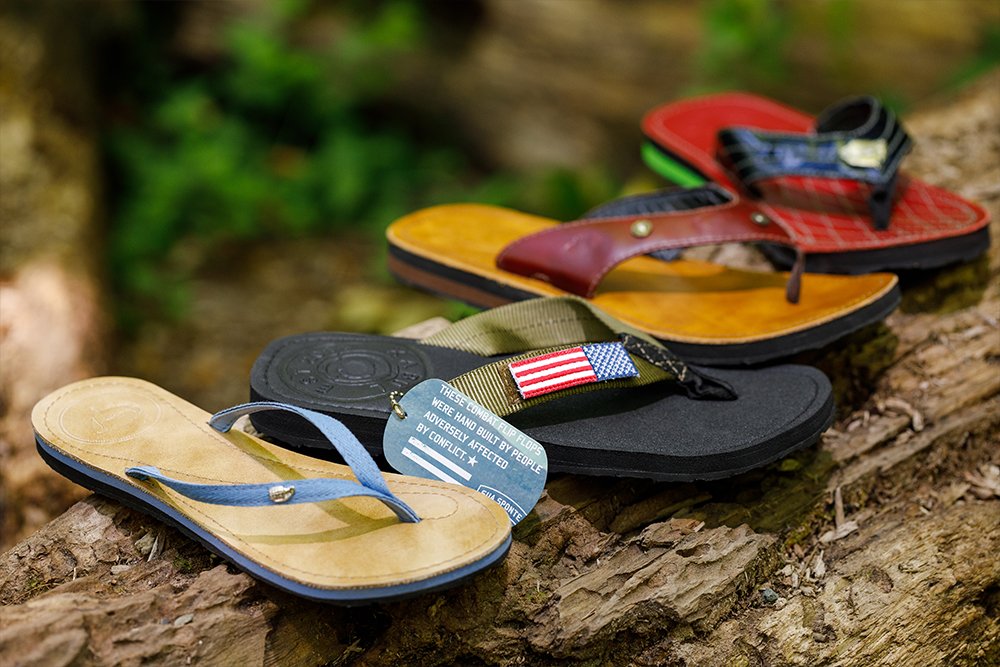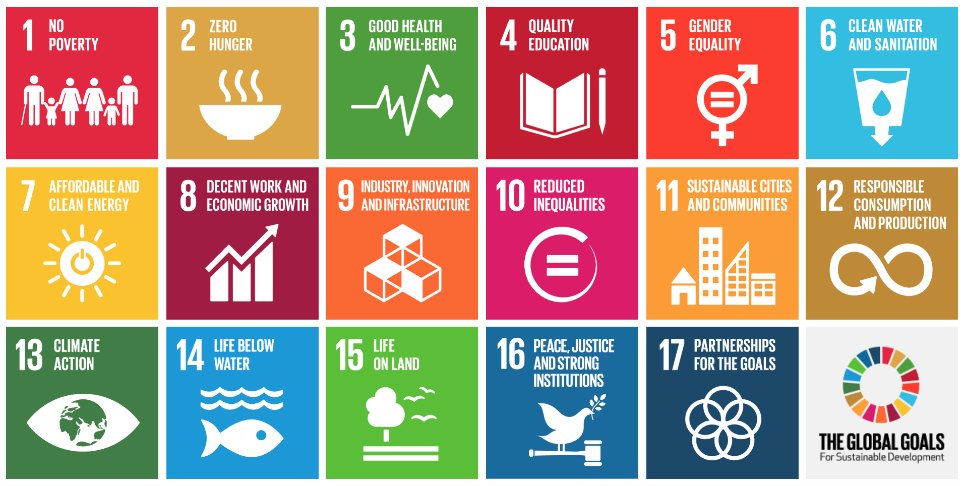If you have a desire to work with underserved communities and promote sustainability along the way, starting a social business will give you the opportunity to get involved with the people you want to serve at a grassroots level.
What are the unique challenges of starting a social enterprise? That’s a good question. Is it like other kinds of businesses? Or more like a non-profit? What makes starting a social good business that much more difficult than a typical for-profit business model?
That’s what we are examining today.
Can you make a living and change the world?
It’s becoming easier to help more people, change the world, and make a living at the same time through social businesses, which are set up such that communities can get the help and resources they need, in a way that works for the local culture and environment.
The business models of many social enterprises ensure that profits are reinvested back into the communities and funding is directed to those who need it most.
However, it takes more than a product or a business model to start a social venture.
At the root of any successful social business is the founder’s vision and desire to serve a community that he/she cares about.
The Unique Challenges of Starting a Social Enterprise
One of the unique challenges many social entrepreneurs face is coming up with a business idea that’s exciting for them, speaks to their passions, and is profitable in the long run.
Meeting these challenges also led to many innovative ideas for social enterprises that are inspiring and game-changing.
For most social entrepreneurs, the birth of a business often comes about as a result of living among the people their businesses aim to serve and allowing their passion to take shape organically.
For example, Maggie Doyne was working with Nepalese refugees in Northeast India when she discovered her passion for working with children, which later evolved into her foundation, BlinkNow.
But she didn’t go from having an idea to creating a foundation overnight. She took baby steps – specific actions that were focused and not overly complicated – and allowed her idea to take shape so she could recruit partners and realize her vision.
Another unique challenges of starting a social enterprise is coming up with a business model that’s sustainable and profitable without compromising their vision.
The key is to combine your passion with sound business concepts. Get inspiration from other social enterprises, see what works, and apply the ideas to your venture. Remember, it’s all about solving a social problem first, the business plan, the growth, everything entrepreneurial will come second.
Related: Download Change Creator Magazine to get in depth strategies and insights from some of the best impact entrepreneurs on the planet
Social Enterprise Business Model Ideas
Each social enterprise has its unique vision and audience. We’ve grouped these business ideas into larger themes to help you focus on their commonalities and underlying principles rather than the specifics of the individual ventures. Many of them can start off as a small business, then expand as the market demands, so if you’re just starting out, you will still want to think about the type of social enterprise you want to have moving forward.
1. Products With “Dual-Markets”
If you have a product that can solve a problem for people in both developed and developing countries, you can leverage the commercial component of selling the item in the developed world and subsidize the initiatives in the developing countries.
For example, Gavin Armstrong’s Lucky Iron Fish is designed as a convenient and cost-effective way to solve health issues caused by iron-deficiency, which is common in both developed and developing countries.
The website has an eCommerce store that sells its products to consumers in the US, UK, Canada, Europe, and Australia. With the profits from the store, Lucky Iron Fish can continue to work with local partners in developing countries and make sure the product reaches those in need.
The company also has a prominent “Give Lucky Iron Fish” section on the website where customers can donate the iron fish to families in need.
2. Buy One, Give One
The beauty of this model lies in its simplicity. Whenever a consumer purchases a product, a similar item will be given to someone in need.
The model can be easily explained to customers and it can be applied to a wide range of products – from TOMS (shoes) to Warby Parker (glasses), Lucky Iron Fish, and Mealshare (food).
This model, however, isn’t without its critics as it often fails to address the root cause of poverty or undermines local producers.
As a response, social enterprises are “souping up” their BOGO initiatives to deliver a more profound local impact:
- Source the “give one” items locally to support communities in need by creating employment opportunities.
- Charge a small fee for the “give one” item, empowering beneficiaries by changing them from a dependent to a responsible consumer.
- Use the proceeds of the “give one” item to fund local initiatives that alleviate poverty.
- Partner with local businesses or organizations to deliver the “give one” items.
What kind of sustainable development goal is your impact business trying to solve? Thinking about the big reason WHY you are doing this business in the first place can help you decide on your model? If your business model doesn’t help the local community you are trying to help, and the sustainable development goal, perhaps it is time to rethink your model from the beginning.
3. Marketplace To Facilitate Commerce
You don’t have to produce a product to become a social entrepreneur.
You can create a marketplace to connect consumers with items produced by artisans in communities you want to help.
This model gives access to consumers to ethically produced goods that are unique and of high quality, while allowing craftsman to get a fair reward for their work and educating the public about the culture in other parts of the world.
In addition, you can donate the proceeds from the sales to charities in need. For example, Society B gives to Action Against Hunger and Kids In Need Foundation.
Such marketplace model can also be used to support local producers such as independent farmers who are often at a disadvantage since they don’t have the bargaining power of Big Foods.
FoodConnect in Australia connects consumers with seasonal and ecological produce and food items from local farmers.
Today’s technology allows for easy coordination of logistics and deliveries, making it feasible for fresh local produce to reach more people at a reasonable cost.
4. Fair Trade Products
Consumers are becoming more conscious about the origins of the items they purchase and many are looking for fair-trade, responsibly sourced products made from conflict-free materials.
These socially conscious items are produced in a better working environment than their counterparts (e.g., with increased wages and better safety) while being sold at a reasonable price.
These social businesses are often based in the communities where the craftsman, artisans, or farmers live to make sure most of the proceeds from the sales are reinvested into the local community.
For example, Rachel Faller’s zero-waste fashion line tonlé brings together craftsmanship and the latest in fashion. Its products are reasonably priced and appeal to a global clientele.
5. Access To Natural Resources And Other Basic Needs
Today’s technology makes it very affordable to deliver natural resources such as clean water and solar power to communities in developing countries at low cost.
If you have a knack for tinkering and inventing, you can find opportunities everywhere!
There are many social enterprises hard at work in making sure those in need have access to these resources:
- org brings safe water and sanitation to communities through access to small, affordable loans. When people have access to safe water, they have time to go to school, earn an income, and take care of their families.
- Soma sells beautifully designed water filter. For every water filter sold, they donate to charity: water projects.
- Husk Power is a rural empowerment project that creates a self-sustaining ecosystem in the villages it serves, enabling economic development along with environmental protection, physical wellbeing, and strengthening of the rural communities.
- Smart Solar Box is a program that teaches users how to build a power-producing device at home for less than $200.
- Environfit, founded by Ron Bills, offers a global product line of clean cooking technologies that cook faster while reducing fuel use, smoke, and toxic emissions.
6. Sustainability-Focused Products Or Services
Besides economic advancement for underserved communities, sustainability is another important component of social entrepreneurship.
There are many ways to promote an environmental cause through social businesses and here are some examples:
- Help people in your community recondition batteries to reduce toxic wastes and save money.
- Start a business constructing affordable homes with shipping containers either at home or abroad. These houses can provide shelter to the homeless, people affected by natural disasters, or battered women in need of temporary residence.
- Become a community event planner to connect local businesses or a digital event planner to work with social businesses all over the world. You can specialize in events that support the causes you’re passionate about, generate revenue with sponsorship, and use the proceeds to help charitable organizations of your choice.
- Start a sustainable, ethical online clothing company that reduces waste!
7. Microlending
Microlending, made possible by the widespread use of the Internet, has become a popular social enterprise business model.
It allows entrepreneurs in the developing world access to loans they’d otherwise be unable to obtain so they can start a small business and sustain themselves.
Microlending institutions help administer such lending for humanitarian purposes and ensure that the money is being put to good use.
These organizations, such as Kiva, allow lenders to choose categories or borrowers they want to support. Lenders will get updates on their loans and later see the amount, plus interest repaid to their accounts.
The use of data allows microlending organizations to select borrowers with a high likelihood of repaying the loans. In fact, Kiva boasts a 97% loan repayment rate.
Lenders often get a return that’s higher than putting money in a traditional savings or CD account. They can fund a portfolio of many dozens of microloans to help disperse the risk.
8. Social Crowdfunding
Crowdfunding has become a popular way for many social enterprises to get seed money without having to go through the lengthy process of obtaining VC funding or loan application.
If you’re passionate about helping other social entrepreneurs realize their dreams, you can start a crowdfunding platform dedicated to helping social businesses, such as Alex Budak’s Start Some Good.
Besides access to supporters, social crowdfunding platforms can assist social enterprises by offering resources and access to additional funding opportunities.
9. Sourcing And Skill Training
You don’t have to be inventing social good products to make an impact.
In fact, many of these products already exist, yet they don’t get to the intended communities due to the lack of distribution systems and proper training.
If you have a talent in organizing logistics and training workforce, you can make a big impact by sourcing several social good products (e.g., clean cookstoves, affordable power solutions) and provide training to underemployed groups in a community to sell the products on a commission basis.
Livelyhoods uses a hub-and-spoke distribution model, with branches in slum communities that serve as training centers and inventory stock points.
In addition, it uses a micro-consignment and door-to-door distribution model to provide women and young people with a low-risk way to earn an income while making social good products available to the community.
10. Educational Travel
If you love to connect with different local communities and share your passion for traveling, consider starting a travel company that focuses on providing an intercultural learning experience and a positive social impact on the local communities.
For example, Evoluzion Travel partners with local communities to ensure that tourism revenue goes directly to guides and local entrepreneurs. They also work with grassroots organizations in the destinations to support community development projects.
They support the local economy by using local transportation, staying at local hotels, buying crafts and products from local artisans, and designing authentic travel experiences that promote cultural exchange.
11. Virtual “Assembly Line”
Outsourcing is everywhere in our society, but what if you can facilitate outsourcing while having a social impact?
That’s what Cloud Factory does. The company provides skill training to underserved populations in specific programming tasks and then create an “assembly line” that can put together a product or project, e.g., a website, in a way that’s faster, cheaper, and with a higher quality standard than conventional outsourcing.
Local workers not only receive job training but also have access to employment with higher wages than they would normally receive doing menial work.
Conclusion
As you can see, a social enterprise can take on many shapes and forms – it’s only limited by your passion and imagination!
There’s a world of possibilities when you connect the global society with local communities.
The success recipe for many of these ventures is sensitivity to the environment and culture of the local community. We can no longer just take what we think is “right” in the Western culture and impose it on other communities.
It’s important to do your homework and understand how a specific product or service can fit into the context to deliver the desired outcomes, as well as how it contributes to the continued growth of the community by investing resources into solving the root cause of the challenges.
It all starts with solving a social problem. What problem are you going to solve through business? What’s your big idea?
Now that you know the challenges, you might want to learn how to start a social business. We recommend you check out, The Beginner’s Guide to Starting a Social Business.








